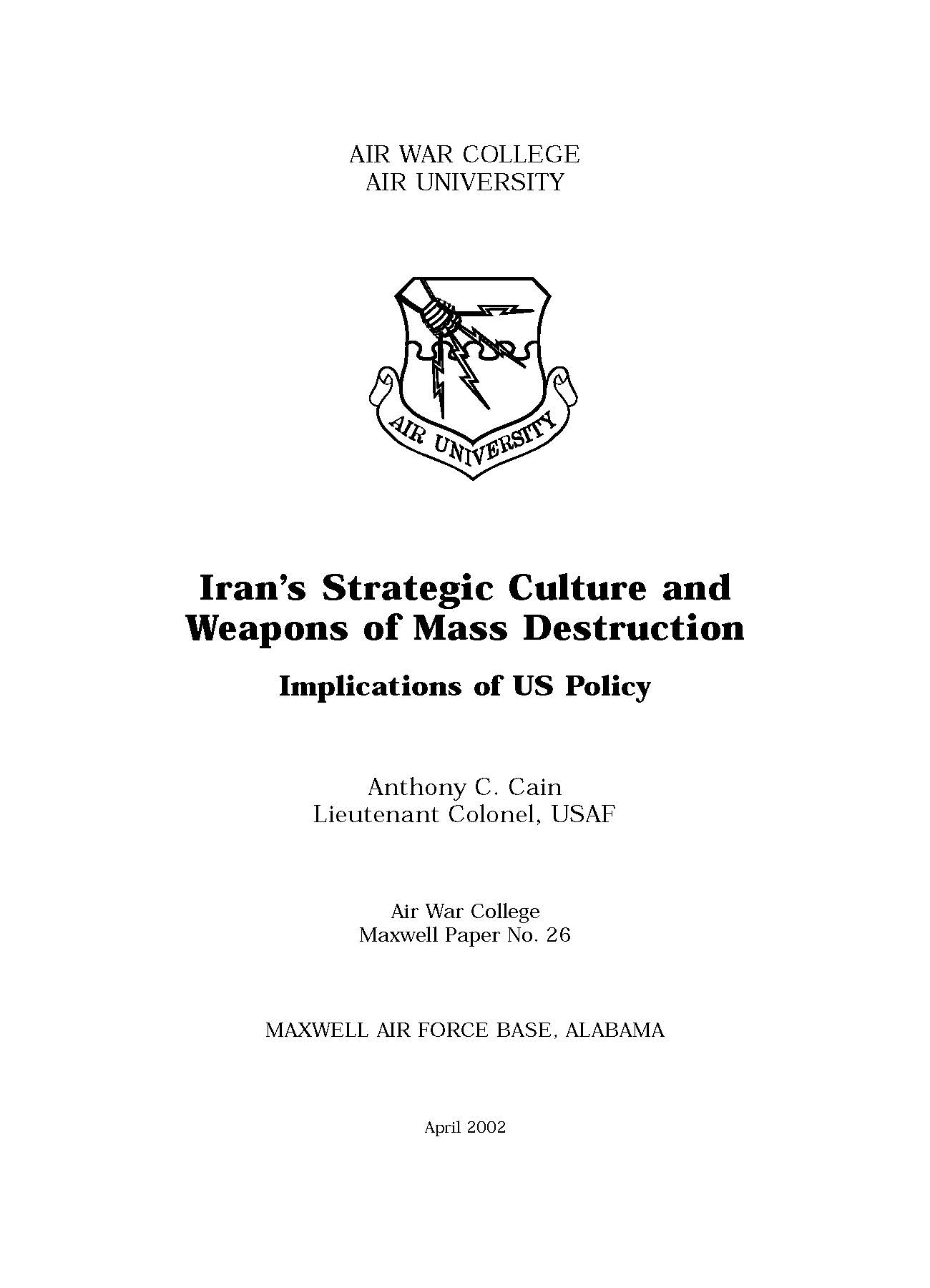 In this study, Lt Col Anthony C. Cain, PhD, analyzes the relationship between Iran’s strategic culture and weapons of mass destruction. Following the Iranian Revolution in 1979, foreign policy experts in the West had trouble comprehending the cleric’s politicized Shi’i ideology and reacted with alarm when Khomeini, energized by the revolution’s success, acted to export his ideology to other communities in the Middle East—sponsoring terrorism, if necessary, to combat regimes that supported US policies and interests. Consequently, the United States focused on containing Iran until the regime changed enough to allow for less ideologically charged dialogue to occur on the one hand while, at times, pursuing active measures to overthrow the revolutionary regime on the other. This range of policies resulted in economic sanctions and an arms embargo against Khomeini’s Islamic republic. Moreover, when war broke out be-tween Iran and Saddam Hussein’s Iraq, the United States opportunistically backed the Iraqi dictator in the hope that a military defeat would usher in moderate leaders in Tehran. At times the relationship flared into military confrontation. US forces bombed Iranian targets in the Persian Gulf, and Iranian leaders launched missile attacks against shipping in the same waters. Beneath the surface of Middle Eastern power politics, Iran became a touch-stone for religiously charged revolutionary movements across the Middle East. Perhaps the low point for US-Iranian relations occurred on 3 July 1988 when a US Navy Aegis cruiser shot down an Iranian Airbus, killing all 290 passengers aboard.
In this study, Lt Col Anthony C. Cain, PhD, analyzes the relationship between Iran’s strategic culture and weapons of mass destruction. Following the Iranian Revolution in 1979, foreign policy experts in the West had trouble comprehending the cleric’s politicized Shi’i ideology and reacted with alarm when Khomeini, energized by the revolution’s success, acted to export his ideology to other communities in the Middle East—sponsoring terrorism, if necessary, to combat regimes that supported US policies and interests. Consequently, the United States focused on containing Iran until the regime changed enough to allow for less ideologically charged dialogue to occur on the one hand while, at times, pursuing active measures to overthrow the revolutionary regime on the other. This range of policies resulted in economic sanctions and an arms embargo against Khomeini’s Islamic republic. Moreover, when war broke out be-tween Iran and Saddam Hussein’s Iraq, the United States opportunistically backed the Iraqi dictator in the hope that a military defeat would usher in moderate leaders in Tehran. At times the relationship flared into military confrontation. US forces bombed Iranian targets in the Persian Gulf, and Iranian leaders launched missile attacks against shipping in the same waters. Beneath the surface of Middle Eastern power politics, Iran became a touch-stone for religiously charged revolutionary movements across the Middle East. Perhaps the low point for US-Iranian relations occurred on 3 July 1988 when a US Navy Aegis cruiser shot down an Iranian Airbus, killing all 290 passengers aboard.
Author(s) • Anthony C. Cain
Year • 2002
Pages • 39
ISSN • 2575-7539
AU Press Code • MP-26